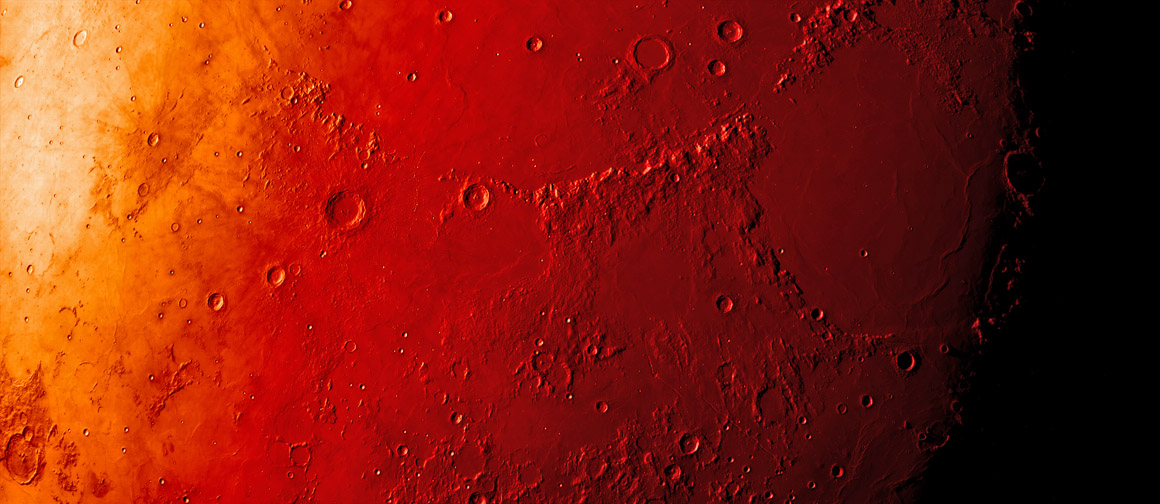March 10, 2018
Beyond Red
Originally published October 13, 2008

image made with Nordic Optical Telescope by M. Gâlfalk, G. Olofsson, and H.-G. Florén, Stockholm Observatory
This red Moon is unique not just for it's display color but also for the wavelength color it was imaged in. The mosaic was obtained with the 2.5 m Nordic Optical Telescope in the Canary Islands using an infrared camera that works at 3.45µm (3.45 microns for old-timers). The image above is reduced to about 10% of the original scale and resolution. In viewing close-ups you will see that even though a 98" telescope was used, the resolution is comparable to what amateurs can achieve with apertures of 12"-14". However, the huge area covered at this high resolution is extraordinary. The image has an absolutely sharp character that almost looks like it was made in a computer from a digital terrain map - but it wasn't. At this infrared wavelength most albedo markings are muted - Copernicus's rays are hard to see, but Kepler's are more visible. A nice Flash atlas with high res images, nomenclature and music is available. The 4000 images for the mosaic were captured in 2003 - I hope Gâlfalk, Olofsson and Florén will point their telescope to the Moon sometime soon to image the entire nearside!
Chuck Wood
Technical Details
Quoting from the NOT webpage: A total of 4000 mid-IR images on 500 different positions were obtained with a seeing of 0.3-0.4 arcsec FWHM on July 19th 2003, spending a total of 26 minutes on the observations. This sounds like the observers did use the resolution-enhancing technique of stacking video images.
I thank Jean-Bernard LePecq for reminding me of this startling image.
Yesterday's LPOD: Moon Science for All
Tomorrow's LPOD: Third Discovery
COMMENTS?
Register, Log in, and join in the comments.



